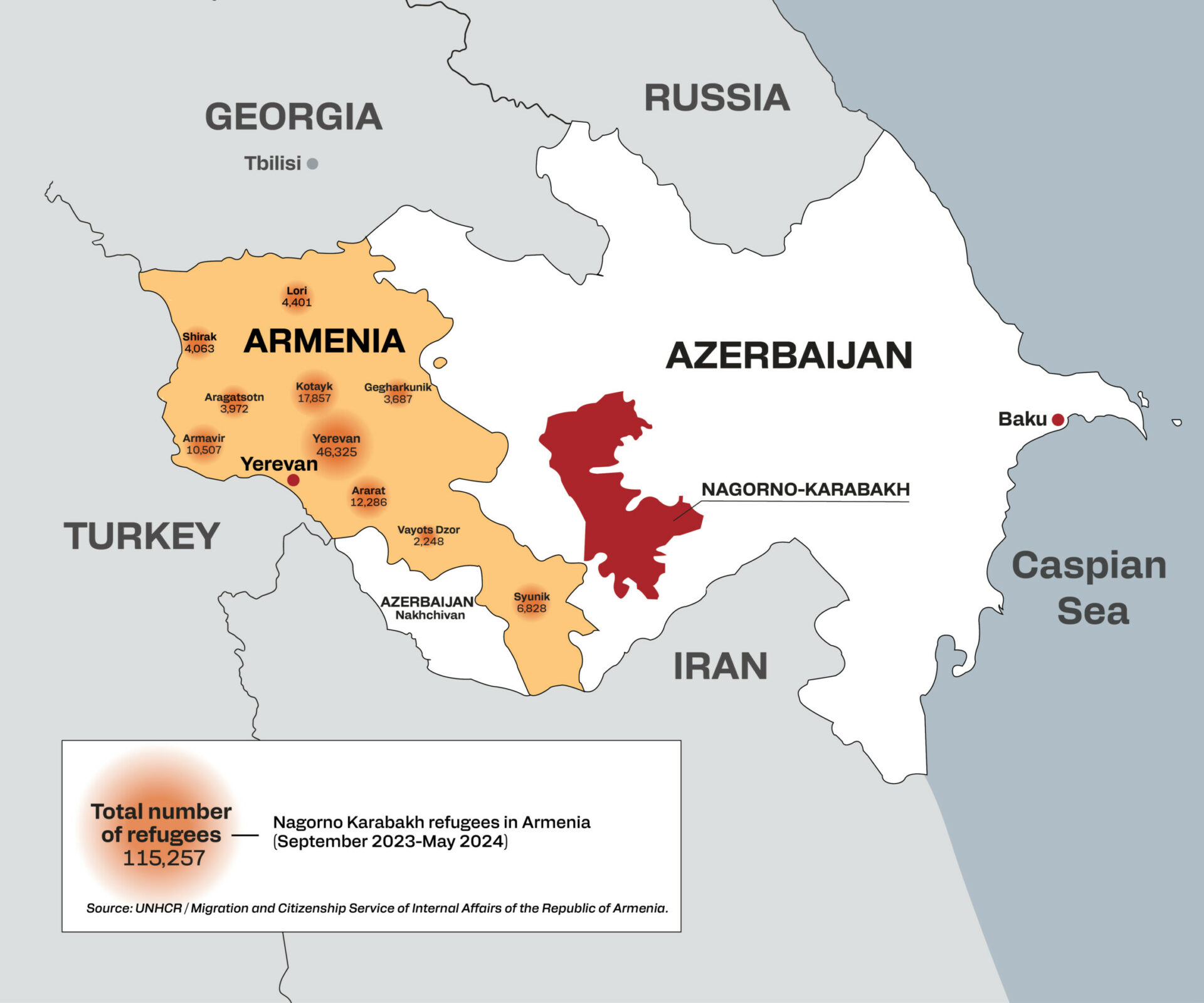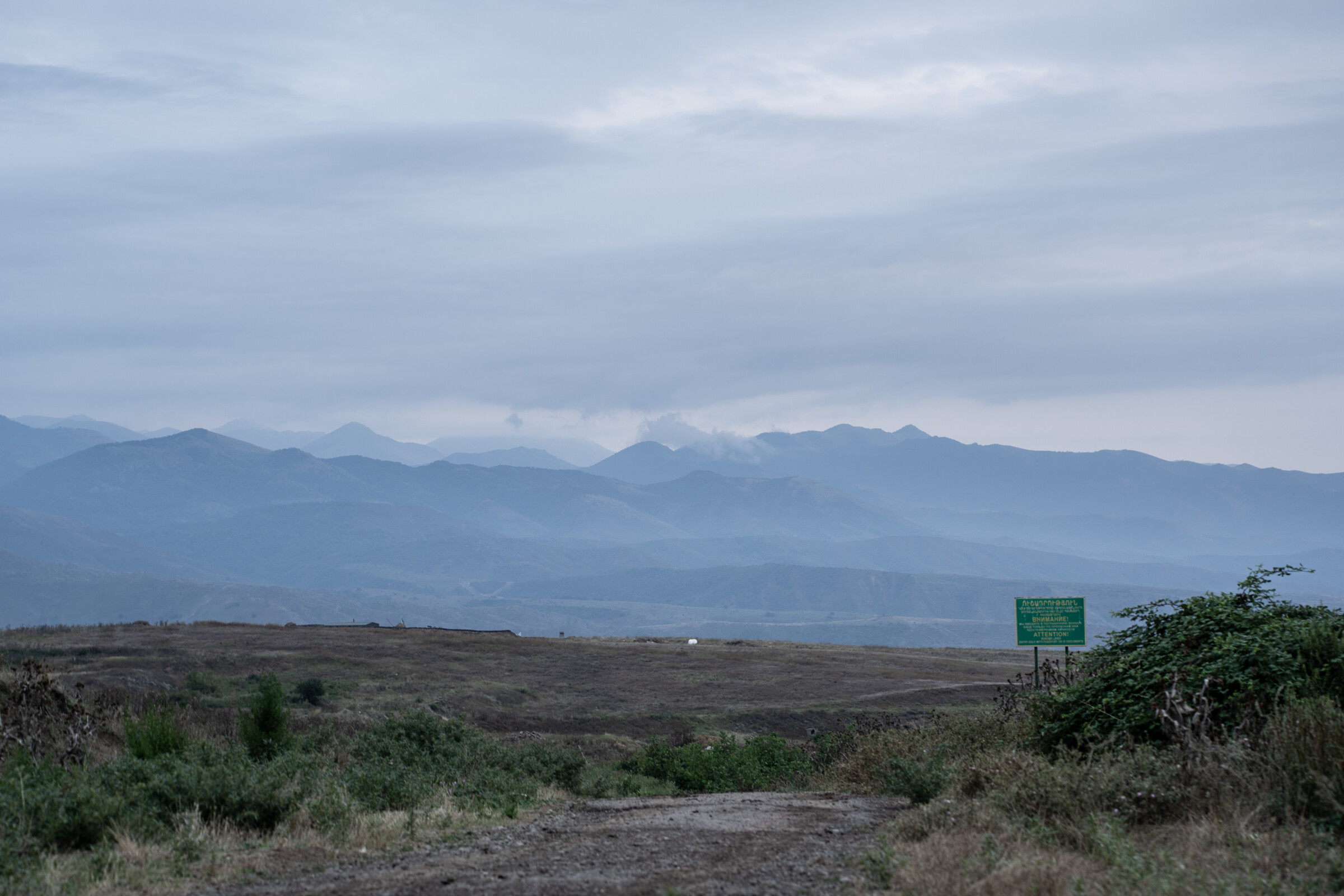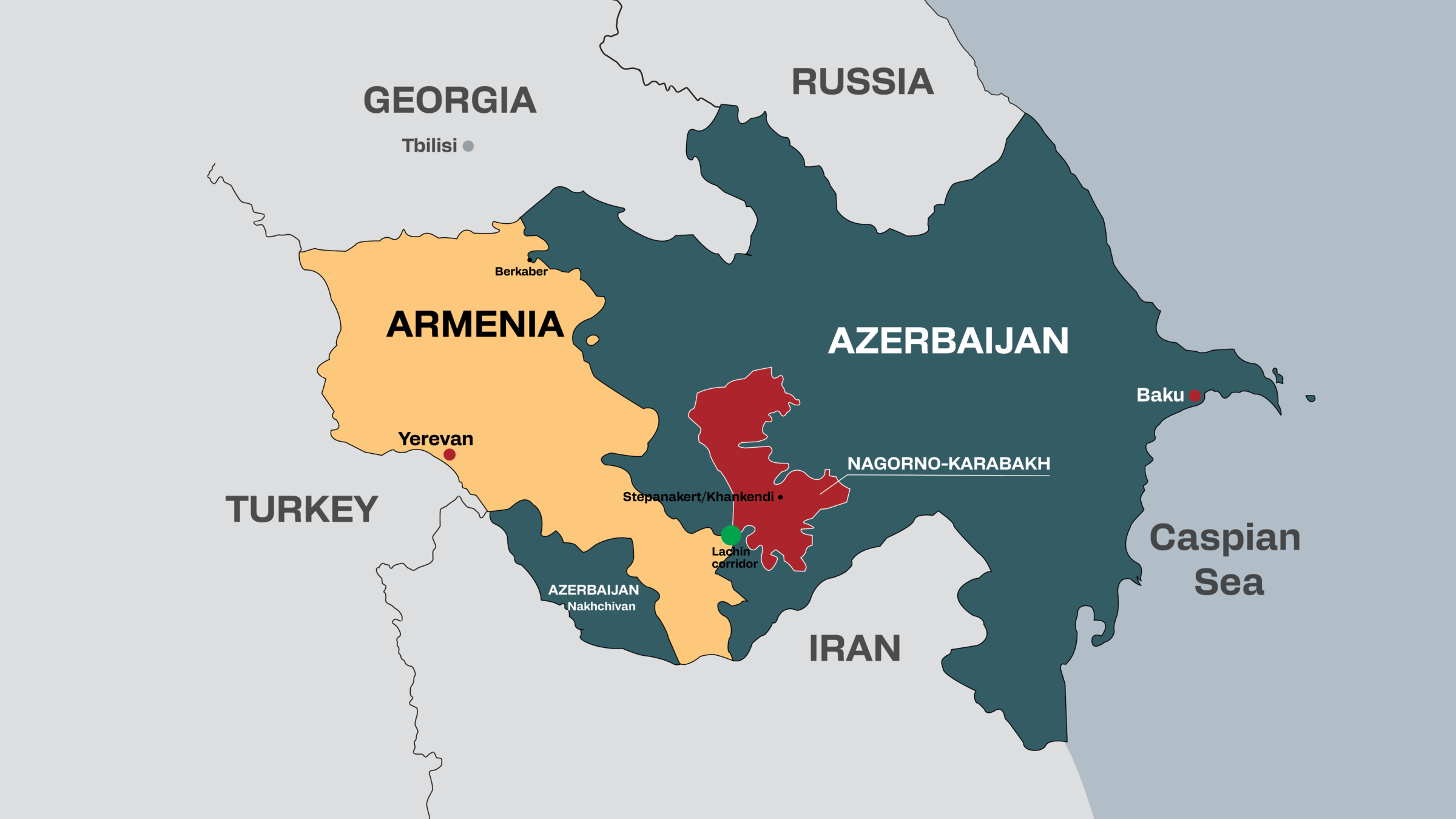How should journalists and the media cover the crisis in this region? One year after Azerbaijan’s military offensive in Nagorno-Karabakh, Armenian refugees who fled en masse, are trying to build their lives.
In September 2023, Azerbaijan’s government launched a large-scale military offensive against Nagorno-Karabakh (also known as Artsakh), a once self-proclaimed autonomous region in the mountains of South Caucasus, that had been predominantly inhabited by Armenians until then. This followed a nine-month blockade imposed by Baku, which had already caused a humanitarian crisis. The military offensive marked the peak of a conflict between Azerbaijan and Armenia that has lasted four decades.
According to a report by the United Nations High Commissioner for Refugees (UNHCR), more than 110,000 refugees have fled Nagorno-Karabakh to Armenia. International observers have described this mass displacement as a war crime. “From the Azeri perspective, a historical injustice has been corrected. From the Armenian perspective, however, it represents a profound injustice. Yet, the issue of territorial affiliation has been conclusively resolved”, Dr. Anna Matveeva, Senior Visiting Research Fellow at the Russia Institute, King’s College London, told iMEdD.

In August 2024, just weeks before the first anniversary of the military offensive against Nagorno-Karabakh, Greek photojournalists and videographers Alexandros Zilos and Kyriakos Finas visited the region. They began their journey in the autonomous province of Nakhchivan, situated on Armenia’s southern border and under Azerbaijan’s control. “Our goal was to engage with local communities and explore the effects of Nakhchivan’s isolation and its heavy economic dependence on Turkey and Iran”, Alexandros Zilos and Kyriakos Finas explained.
Checkpoint
“Nakhchivan is home to many military facilities, and there is a sense of insecurity among residents regarding anything related to Armenia,” they explain. “At one checkpoint, security personnel deleted footage from our cameras and returned our passports only after we agreed never to return to the area. After this incident, our fixer refused to continue, so we decided to leave for neighbouring Armenia, for which the border was closed.”
The shortest route was via Turkey, but that border was also closed. As a result, the two Greek photojournalists flew from Nakhchivan to Baku, the capital of Azerbaijan. From there, they traveled by train and car, first to Georgia and then finally to Armenia.
No-media area
“The entire Caucasus region is facing an unprecedented level of disinformation and hate speech, especially over the Nagorno-Karabakh territorial dispute and the ongoing threat of war between Armenia and Azerbaijan”, Jeanne Cavelier, RSF head of Eastern Europe & Central Asia Desk, told iMEdD.

“It is possible to visit Azerbaijan with accreditation, but with the difficulty of being under surveillance and with a few possibilities to work freely. It’s not possible to visit the Nagorno-Karabakh region without taking part in a press tour organized by the authorities, which involves a high risk of being manipulated or used to whitewash the government’s propaganda”, she noted.
“Azerbaijan is one of the worst countries in terms of press freedom, it’s ranked 164th out of 180 countries in our last World Press Freedom Index. The entire media sector is under official control, except a few independent news sites, mostly based abroad to escape state censorship, like Azadliq and Meydan TV. Journalists who resist harassment, blackmail or bribery attempts, are thrown into prison under absurd pretexts. RSF counts 14 media professionals detained as of today because of their work.”
In Armenia ranked 43rd out of 180 countries, the press freedom situation is classified as “satisfactory”. RSF note that the media landscape remains polarized, editorial policies of many media outlets are subjected to commercial or political interests, but there is no criminal punishment of press workers. Journalists may face threats or violence because of the polarization of the society and hate speech, sometimes even from political elites, which goes unpunished in general.
“Foreign media can visit most parts of Armenia freely. But for several border territories, local journalists need permission from the National Security Service and foreign journalists an accreditation from the MFA”, RSF’s Jeanne Cavelier told iMEdD.
In Armenia
Meanwhile, photojournalists Alexandros Zilos and Kyriakos Finas had crossed over to Armenia. “Our goal was to gather and document the testimonies of Nagorno-Karabakh refugees”, they explain. “Before we left Athens, we had already contacted an NGO with the help of the Armenian community in Thessaloniki and a photojournalist, who helped guide us and connect us with refugees from Nagorno-Karabakh.”
“Our work focused on the capital of Armenia, Yerevan, where many displaced people had settled. During our stay in the country, we also visited Goris, a border town that served as a refugee reception center between September and October 2023. There, with the help of a local translator, we continued gathering testimonies.”
“At the same time, to complete our story, we hired a local guide to take us to Kornidzor, a village on Armenia’s eastern border with Azerbaijan after the 2020 war and a link to the Lachin corridor, which once connected Nagorno-Karabakh with Armenia.”
Watch the video: “Underreported: the Nagorno-Karabakh displaced” here.
